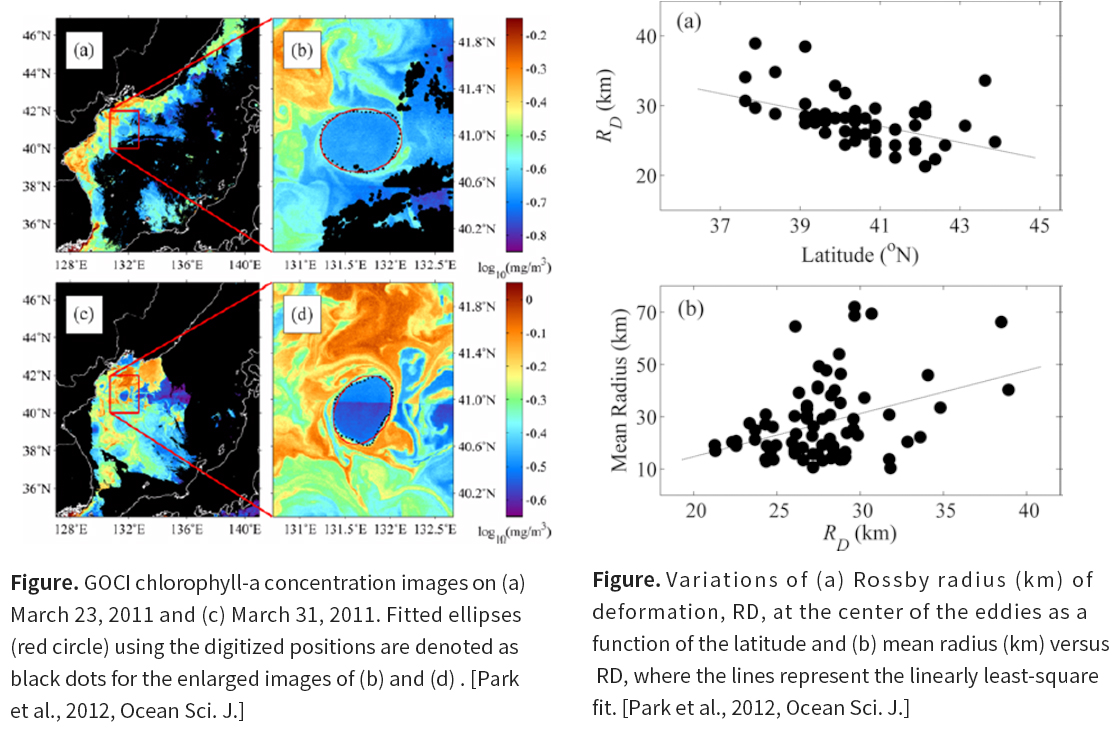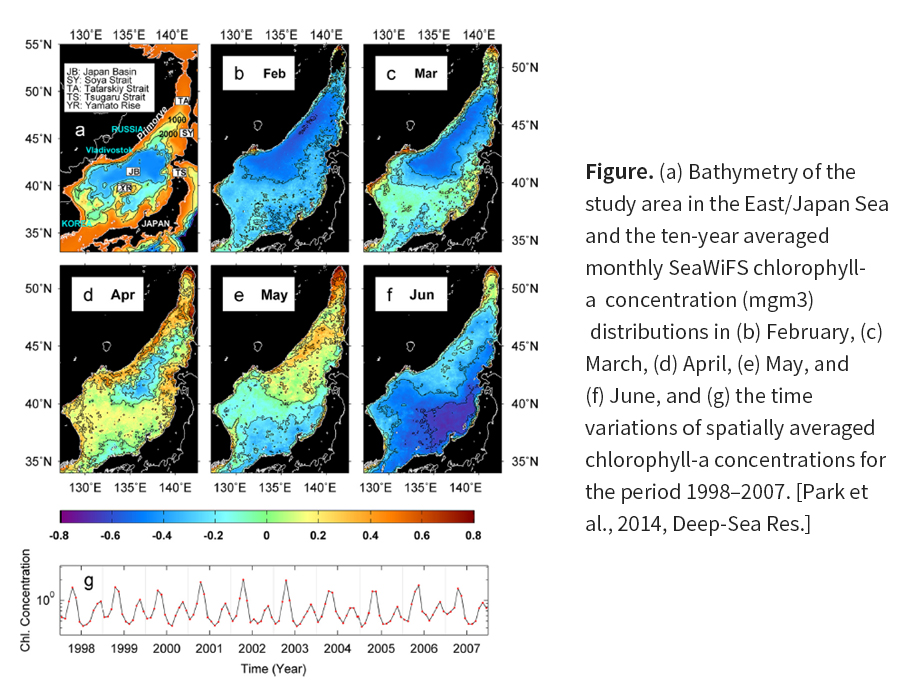Chlorophyll-a Concentration
- HOME
- Research
- Topic
- Chlorophyll-a Concentration
 Mesoscale Eddy Dynamics
Mesoscale Eddy Dynamics
Mesoscale eddies have played a significant role in transporting water masses, heat, and nutrients in the ocean and have provided considerable kinetic
energy for the circulation of the ocean. Moreover, the spatial scales of mesoscale eddies are of importance in understanding physio-biogeochemical
processes in the East/Japan Sea.
Chlorophyll-a concentration images from GOCI revealed numerous eddies during the phytoplankton bloom in spring. The elliptic elements of the eddies
were derived by the least square fitting of the digitized positions to an ideal ellipse with a rotation angle. The scales showed dependency on the
meridional variation of the internal Rossby radius of deformation.
 Spatio-temporal Variation of Marine Ecosystem
Spatio-temporal Variation of Marine Ecosystem
Chlorophyll-a concentrations in the East/Japan Sea have large seasonal and interannual variabilities. Chlorophyll-a bloom is related to the physical
environment, such as the mixed layer depth, the nutrients, and the quantity of solar radiation.
The relationship between the spring bloom along the Primorye coast and the sea ice of the Tatarsky Strait in the northern region of the East/Japan Sea
was investigated using the ten-year SeaWiFS chlorophyll-a concentration data and DMSP/SSMI sea ice data.
Sea ice melted water provided favorable conditions for phytoplankton blooms in terms of nutrient supply and changes in the water column stratification,
resulting in a shallow pycnocline.
The results addressed the importance of the physical environment for biogeochemical processes in semi-enclosed marginal seas affected by local sea ice.



